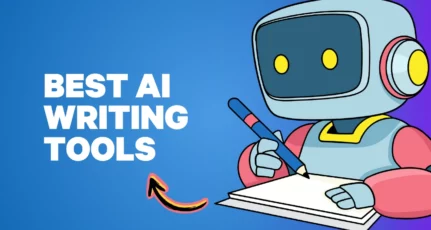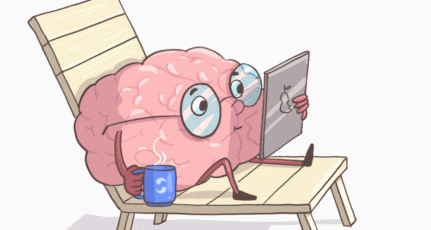What’s your favorite part of a good story?
Mine is always the plot.
I love how my favorite authors take something ordinary, turn it around, and then present me with this new idea. Other people enjoy the characters and their growth throughout their ordeal. Meanwhile, some folks are obsessed with the details of the setting. Whichever element you like, we could all agree that story-telling is – and always will be – timeless.
No wonder the most successful bloggers use this tactic.
In fact, our brains are so in tuned with stories that through thousands of years, it has inspired cooperation, helped us survive, and have kept our species alive. There are numerous articles dedicated to how creative writing can help you with your blog. But in this post, let me show you how the five common components of a story (the plot, characters, setting, conflict, and resolution) can take your blogging skills to a new level.
1. The Plot: What’s YOUR Story In a Nutshell?
In some references, this can also be called the main ‘premise’. Good content is akin to a good story: it revolves around a central idea. The Star Wars Trilogy is a great example. Its original author, Alan Dean Foster, wanted the plot to be that good triumphs over evil no matter what – and it showed in all the books and the movies. People loved it because it was consistent.
In blogging, our most common plot is ‘helping readers with our expertise’. Whether the post is about tips on cooking casserole or how to write a compelling article, you should leave people feeling like they gained something useful from your work. We’re all familiar with link-bait articles: writings that promise something wonderful but deliver another. This goes against one of the basic elements of writing.
So to deliver quality, consistent blog stories over time, be clear on your plot first. The best way to know whether you’ve nailed this one down is to summarize your thought in just two or three sentences. It should answer the question: ‘what’s this article about?’ If you can do that, then your plot is ready.
2. The Setting: WHERE Is Your Story?
In creative writing, this is easy to spot. It’s space in Star Wars, Hogwarts in Harry Potter, and New England in Little Women. It’s not only limited to places or location. A story’s setting can also be a specific time, date, or event. In blogging, your setting would explain the motive behind your plot.
Say you want to write about how to create a convincing article for prospective digital marketing clients. Your goal (or plot) would be to give away solid tips on how to be persuasive through text. Your setting is the dynamic industry of modern online marketing. Show it the best way you can through concrete examples or comparisons.

3. The Characters: WHO Are In Your Story?
This is perhaps everyone’s favorite part. We all want to know who’s who in the grand scheme of things and why they are important. You may think there are no characters in a blog post – but there is: YOU. You have the most significant role in your blog posts because you are the one carrying your audience. This is why having a unique voice is essential as it shows in your work.
Readers can identify character types through dialogues alone. For instance: right now, my character is informal but shows a fine balance between being conversational and professional. I sound like this through all of my articles. Readers can’t say I’m much fun – but I get a lot of feedback that my works are educational, insightful, and positive for the most part.
One blogger, I like in particular, Erika Napoletano, has a totally different character. She seems headstrong, independent, and adventurous.
In fact, she reminds me of the heroine Kriemhild from the old Germanic epic, Nibelungenlied. As you can see, we can play different characters based on how we choose to portray ourselves. The more you show your true self, the more your writings are going to break through all that digital noise.
4. The Conflict: Is There a Problem?
Although having a grand plot, amazing characters, and an unforgettable setting is crucial to a good story, they’re all useless without conflict. In the Harry Potter series by J.K. Rowling, for example, the main conflict is that Lord Voldemort was trying to kill Harry Potter. In Little Women by Louisa May Alcott, the girls go through various hardships in life that test their values. Conflict is not just to keep a story exciting – it’s to help characters evolve.
In blogging, it is normal for authors to convey contradicting views or to present problems. Without it, the piece will feel flat, bland, and one-sided. In Paul Pruneau’s post on Business2Community about blogging essentials, his conflict was about too much content and how it can bury one’s blog under all that chaos.
The arguments presented in these articles make readers excited to see how it can be resolved. They hand onto the author’s every word. They stay. The same is true in a good story. After all, weren’t we all at the edge of our seats when Titanic’s demise pushed Rose and Jack to fight for their lives?

5. The Resolution: Everything Must Come to an End.
Unfortunately, even good stories must come to an end. This is where we need to go full circle and conclude our works. In Titanic, Rose moves on but eventually meets Jack in the afterlife. In Harry Potter, Harry finally defeats Voldemort. Conflicts that were presented must have an answer; otherwise, readers will feel cheated.

Going back to our example of writing a convincing post for potential online marketing clients, at the end of your article, you should wrap it up with your key thought. Something like, you need to maintain a distinct yet genuine voice to be truly persuasive; or that nothing beats showcasing your experience and value to customers. Repeat your main point if you must for emphasis.
Failing to conclude a blog post often results in confusion. Did the author mean to say more? That was it? If you believe that you have enumerated all the important concepts, you can simply summarize them in your last paragraph. You could also close with a question. The latter often works to get engagement in the form of comments and/or social media shares, because your last sentence made them think.
Best Stories Make Every Word Count
You won’t need these for every post in your blog. There are times when all you need are just a plot and an ending; other times, you’ll have to outline everything. However, knowing how each element in a story contributes to its readability will help us all as bloggers make our works more cohesive.
No matter how baffling a story may seem in the beginning, they all come together before we’re finished reading.
The essential rule that both blogging and creative writing stick to is making EACH word count. ‘Each word had to pull its own weight; it should serve its own purpose’. Similar to composing music, no note should be out of place. So take your time when creating your piece.
After all, the best stories weren’t written in one day.



![How To Start A Blog in 2025 [Blogging Guide For Beginners]](https://www.shoutmeloud.com/wp-content/uploads/2020/05/blog-431x230.jpg)


Wow bro, this post is an eye opener to me. The last we had a chat on Facebook, I know you are coming back to blogging on a grand style.
Awesome to have you here on Shoutmeloud, this is my best blog for blogging tips shaa.
Thanks for dropping this cool post. Have a nice day!!
Thanks for Algomez for such a insightful post. It really helped me have and reminded me whatever I learned back in my creative writing classes at SACAC, Delhi. This blog is very informative and I hope you keep writing such stuff.
Hi! Algomez
After reading this article, i got some amazing fact about creative writing. Thanks for sharing this article. i just want to ask how can i write long and content full article.
Hii!Algomez after reading this post I have found great mind blowing ideas that I think might really work for me !
Creative writing is the first step toward a successful blogging career! Thanks a lot freind
Hii Algomez, thanks for sharing such an insight… though I would like to ask a few quest…
1. we often talk about the reading speed, aiming some benchmarks. what should be the creative writing speed. because, in my case, I have to think deep before writing down my thoughts…to be honest it takes me a 2-3 days to complete a blog… could you plz share your views on this..
Hi ALGOMEZ,
This idea is mind blowing. I think everyone should know such information like you have described on this post.
Thank you for sharing this explanation.
Hi! Algomez
After reading for blog .
I got to know some new facts
I will apply these facts in future
Thank you for the lovely information
Great explanation. Thanks for sharing great insights about creative writing.